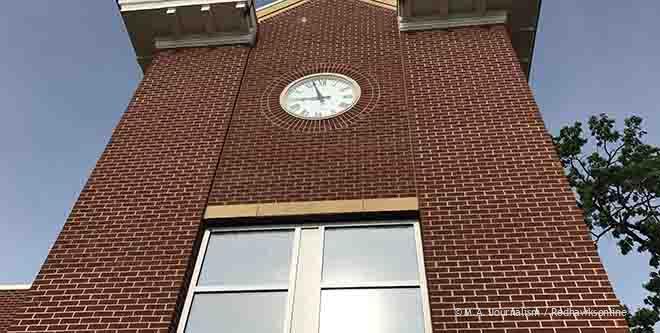The national trend of investing in solar energy reaches Minnesota schools and businesses
Schools and businesses in Minnesota are beginning to explore solar energy as a possible implementation in order to focus on sustainability and community building.
Richfield High School and Mounds View High School have both turned to solar energy as a cost-saving, environment-friendly alternative to traditional methods of powering their respective schools.
Minnehaha has not yet explored solar energy as an option, but it is willing to consider the prospect.
“If there are aspects where as a school we can benefit ourselves and benefit the community by having solar [at Minnehaha] and it makes sense for us strategically, I think it’s a great idea,” said principal Jason Wenschlag, who was principal at Richfield High School during solar installation.
Minnehaha’s exposed rooftops might meet the criteria for solar panels.
“We have lots of rooftop area that’s open to sunlight,” said science teacher Sam Meyers.
Though solar panels are a potential option for Minnehaha, they wouldn’t be the exclusive provider of energy for the school.
Minnehaha would hope to cut current energy costs by investing in renewable energy.
“[Solar energy] would only be a portion to offset some of our costs or diminish some of our costs,” Meyers said.
There are many different options when approaching solar energy.
“There are at least three options that Minnehaha has,” said Brett Benson, operations director at Minnesota Interfaith Power and Light, an organization which works to connect potential solar customers with installation companies.
“One [option] is putting solar on your roof and using the electricity from that solar installation just for Minnehaha,” he said. “Second option-which looks the same because there are solar panels on the roof-is to use the panels not just to supply power to MA, but also as a community solar garden so other folks in the neighborhood and the community have the opportunity to subscribe to those solar gardens and save money on their energy bills.”
“The third [option] is for Minnehaha to subscribe to a community garden itself,” Benson explained. “So you don’t necessarily have to put solar panels on your own roof. You don’t have to do anything except sign up as a solar garden subscriber.”
Solar energy is still a new consideration for Minnehaha, which is not yet near making a decision about renewable energy.
In order for the school to move forward on solar panels, it would need to inspect the potential for cost reduction and explore all of its options.
Though such an inspection has not been conducted, a study from the Solar Energy Industries Associated concluded that, of the 125,000 schools in the United States, between 40,000 and 75,000 can implement solar energy cost effectively.
For reference, Tesla has begun to take orders on its solar roof tiles, priced at $21.85 per square foot, or roughly $65,000 for a 3000 square foot roof.
There are costs and benefits associated with each of the three possible directions Minnehaha could take regarding solar energy.
With option number one-installing solar panels on the school’s open roof space and being the sole recipient of the energy generated-the primary benefit is not having to share.
However, the cost of the solar project would be relatively greater, because Minnehaha would have to cover the costs entirely on its own.
The second option-sharing the energy drawn from solar panels on the school’s roof-entails community effort and shared responsibility.
Residents living in close proximity to Minnehaha would be able to subscribe to the solar garden and receive a portion of the energy generated.
Furthermore, subscribers would contribute to the cost of the solar panels, driving down the cost to Minnehaha.
The final option is signing up for an already existing solar garden.
There are three solar gardens in Minneapolis.
The Northern Sun Community Solar Garden is a few blocks away from Minnehaha on Lake Street; created in 2016, the community garden sits atop Northern Sun Merchandising.

